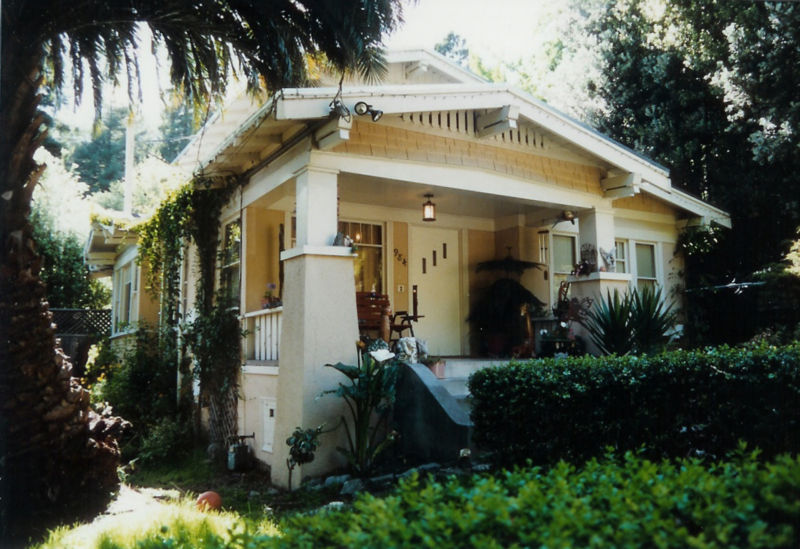 |
| Typical Bungalow in Berkeley, CA (from wikipedia) |
Craftsman style is the architectural offshoot of the American Arts and Crafts decor style beginning in the late 1800's. It was a reaction to the ornate Victorian styles of the mid 1800's. The Craftsman style values function over gaudy decoration. Houses prior to this were for the upper echelon of society, so they had separate spaces for men, women, children, and maids, resulting in a labyrinth of hallways and doors that made the space feel small and isolating. The Craftsman movement opened up the home for family life. Our idea of a front door leading to a common sitting area was popularized due to this movement.
The most popular Craftsman example in the Los Angeles area is the Gamble House in Pasadena.
Gamble House Site - Tour information
Wikipedia - Arts and Crafts Movement - Long-ish article that explains Arts and Crafts philosophies.
Wikipedia - American Craftsman - Basics on architectural, interior, and landscape design of the Craftsman movement.
To further differentiate, if you're on the West coast, you're probably thinking of a style called "California Bungalow." This style is prevalent in older parts of many California cities and is similar to Craftsman style, but smaller. They were the primary construction style throughout the 1920's because of the growing demand for single family homes and the low cost - as little as $900! Notable so-called "Bungalow belts" are in Belmont Heights (Long Beach), Pasadena, and Highland Park.
Wikipedia - California Bungalow
American Bungalow - Different Styles
What is typically associated with Craftsman/Bungalow architecture?
- A large, sometimes wrap-around porch
- Dark brown and green exterior colors to blend in with nature
- Crown moldings with similar door and window frames
- Wood panel floors
- Single story (mostly)
- Exposed rafters
- Dark wood accents
- 1920's construction
- Sloping roofs
- Built in shelves and nooks
- Fire place
Why is this appealing?
This is my opinion:
For those of us who grew up in 60's homes, bungalows present a more interesting architectural style. The wood accents are inviting, the porch is perfect for an afternoon book, and the small unexpected rooms and nooks present an opportunity for creative decor.
A more articulate and informed analysis:
Craftsman Perspective - Embracing The Philosophy
No comments:
Post a Comment